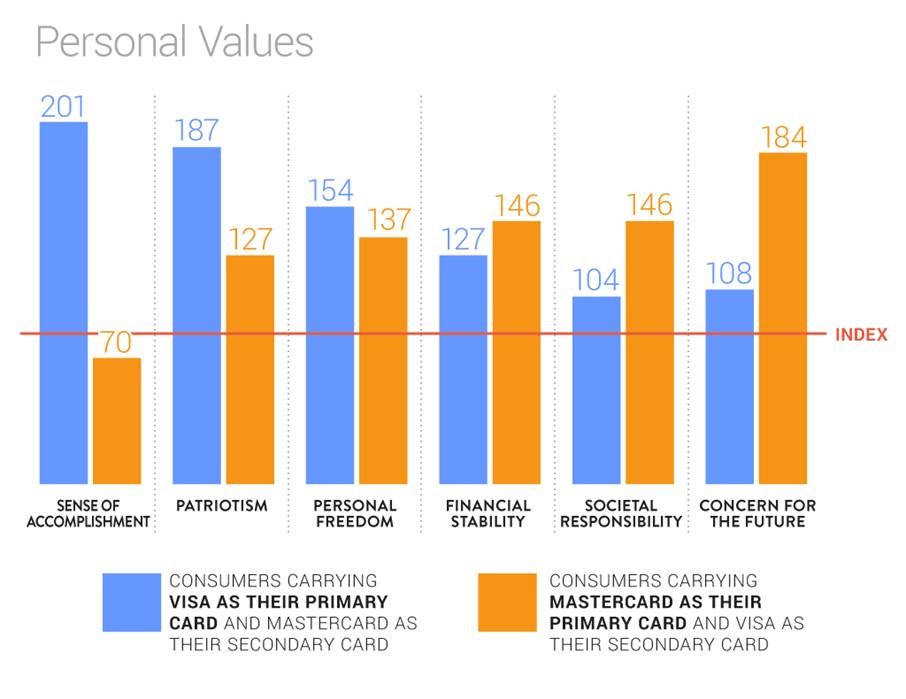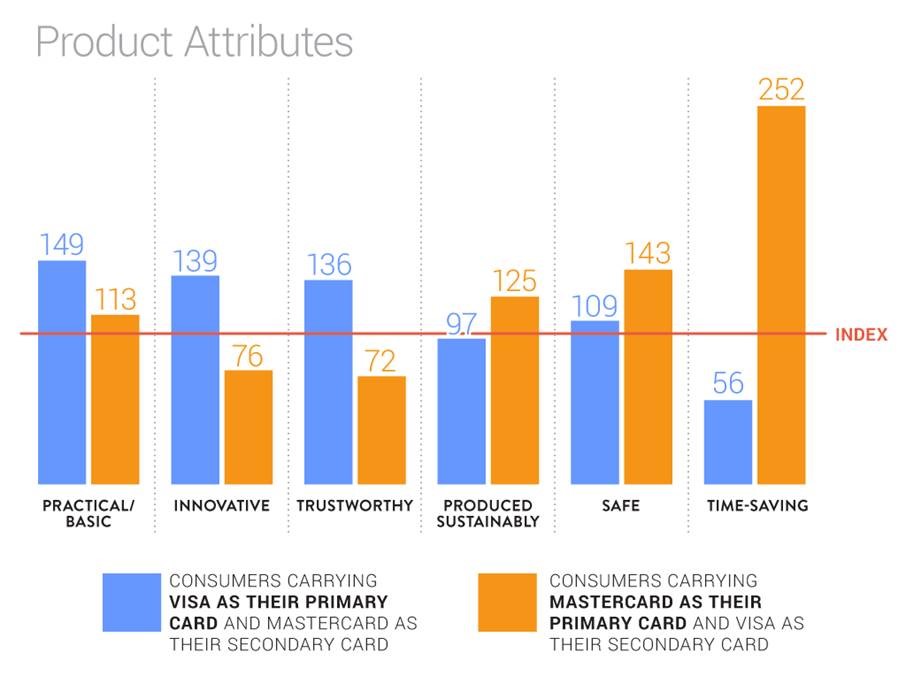For credit card marketers offering cards with a host of standard features and reward programs that can all start to look alike, standing out from crowd is always a challenge. Even if a consumer takes up your card, convincing that cardholder to move your card to the top spot in the wallet can present an even bigger hurdle.
Thinking about this problem made us wonder: Can psychographic data points help card marketers predict whether their card will end up top-of-wallet? If so, could marketing messages seasoned with such insights help attract cardholders more likely to be loyal?
To answer these questions, we dug into new Resonate data to compare the psychographic profiles of consumers who made diametrically opposed choices in their primary credit cards. In one example, we compared two types of profiles: consumers carrying Visa as their primary card and MasterCard as their secondary card, versus consumers carrying MasterCard as their primary card and Visa as their secondary card. Are there identifiable psychographic differences between these two cardholder segments?
In a word: Yes. While it may seem intuitive that consumers would view the Visa and MasterCard brands interchangeably, there are notable and distinct psychographic differences between the two groups. Here’s a comparison of the top index differences in personal values between primary MasterCard versus primary Visa cardholders:

And here’s a comparison of the importance of key product attributes driving purchases:

From the data emerge profiles of two psychographically distinct audiences:
Visa primary, MasterCard secondary cardholders: They seek personal accomplishments, they’re more patriotic, and they value personal freedom. In their product purchases, they seek products that are both innovative and practical, and value trustworthy brands.
MasterCard primary, Visa secondary cardholders: Their core values include Concern for the Future, Societal Responsibility, and Financial Stability. In their product purchases, they seek products that save them time, are safe, and which are manufactured sustainably.
Why such distinct differences between these two groups? Perhaps it’s in the branding: Visa primary cardholders are more individualistic, while MasterCard primary cardholders seek more stability and appear more community-oriented. Understanding and acting upon these distinct psychographic differences can help brands such as Visa and MasterCard:
- Pinpoint and attract new customers with the psychographic profile most likely to exhibit card loyalty.
- Identify and market to those cardholders most likely to move your card to top-of-wallet.
- Protect against card attrition by aligning your brand with your cardholders’ unique personal values and motivations.
- “Fish where the fish are” by advertising on sites most likely to attract loyal cardholders.
In this case, MasterCard might advertise on sites that review sustainable products, or which feature community-themed content. Visa, meanwhile, might feature more patriotic or individualistic themes in its messages, and partner with innovative brands. The bottom line: More relevant card acquisition and activation messages based on psychographic values can help card marketers move beyond points programs and APR rates to build deeper relationships with loyal cardholders.
Categorized as: Blog Page


